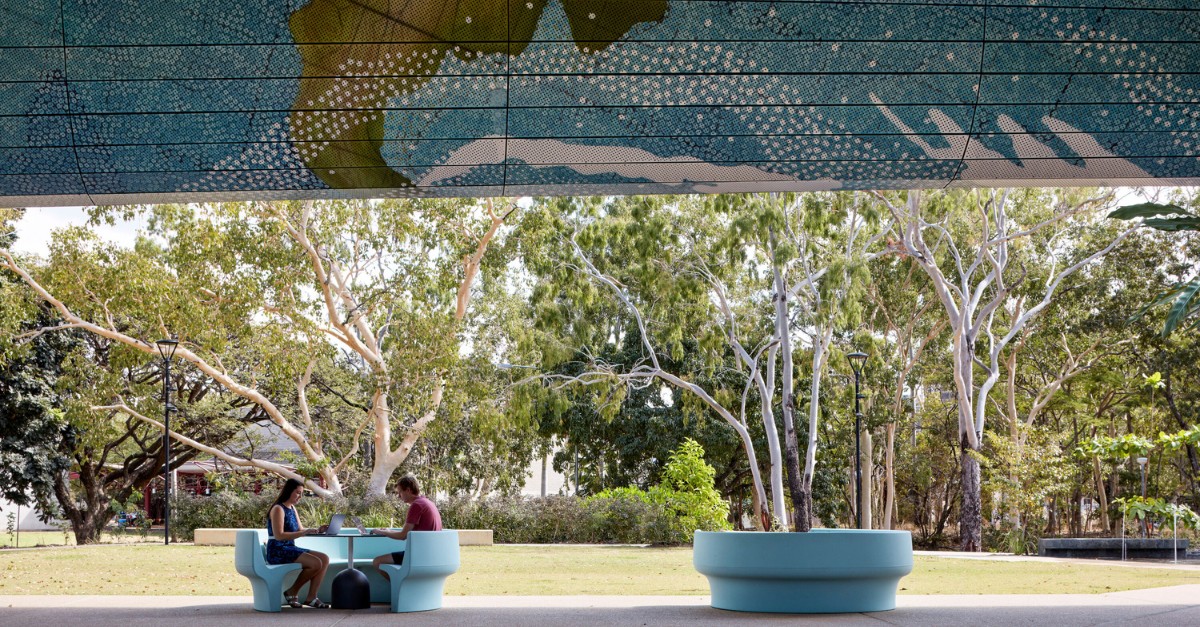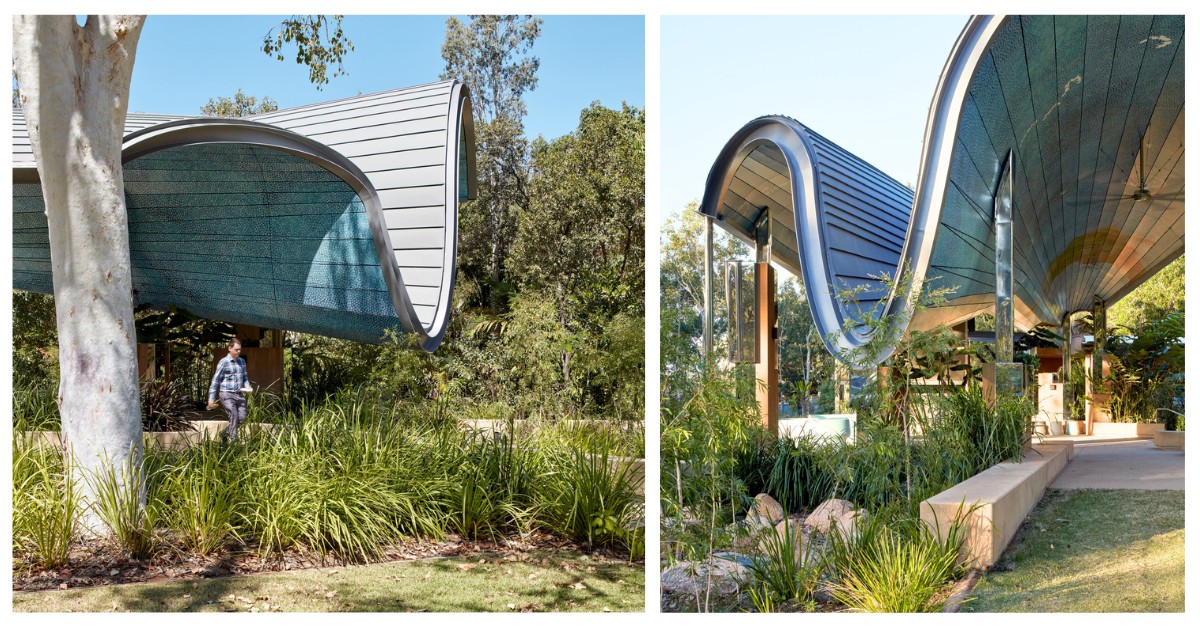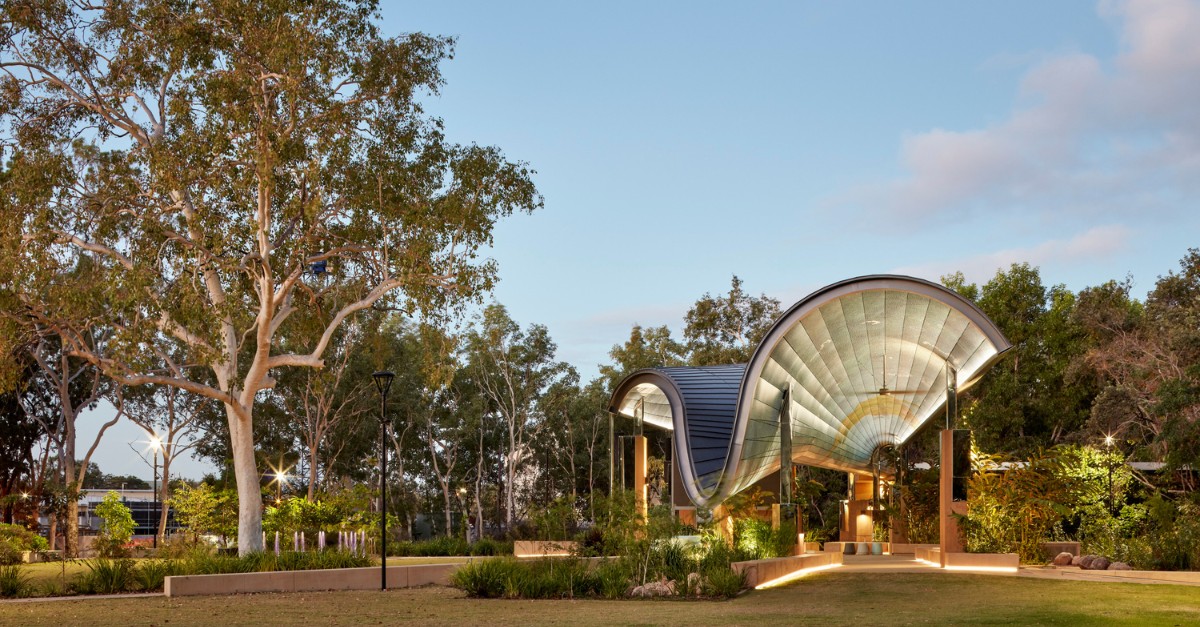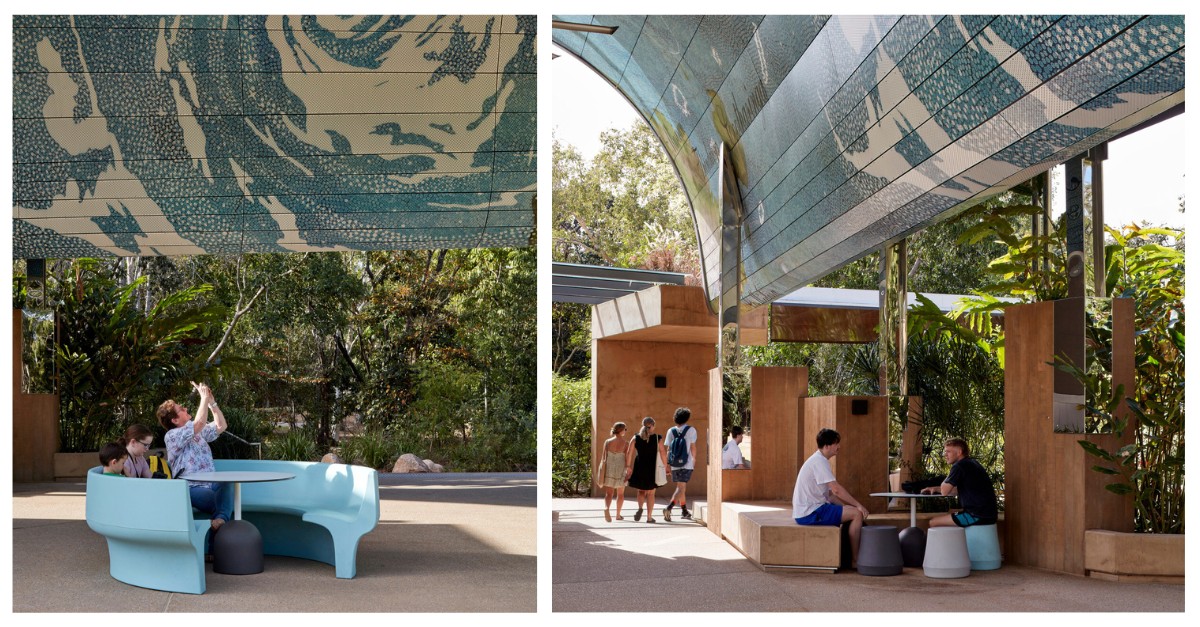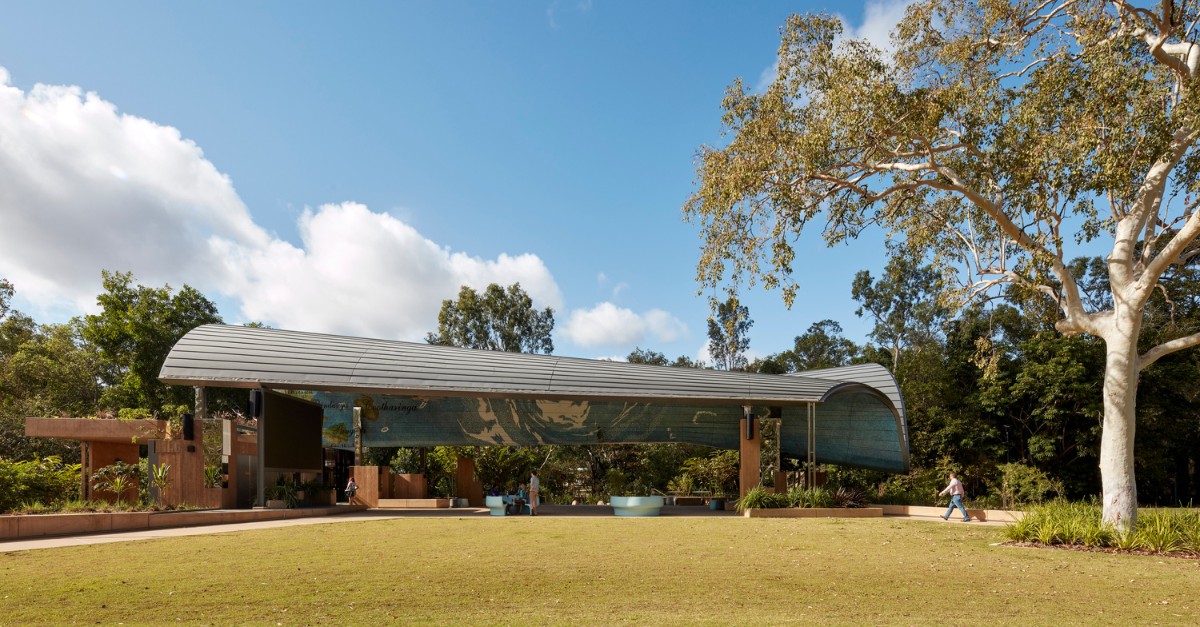BIOPHILIC DESIGN CASE STUDY:
James Cook University Central Plaza
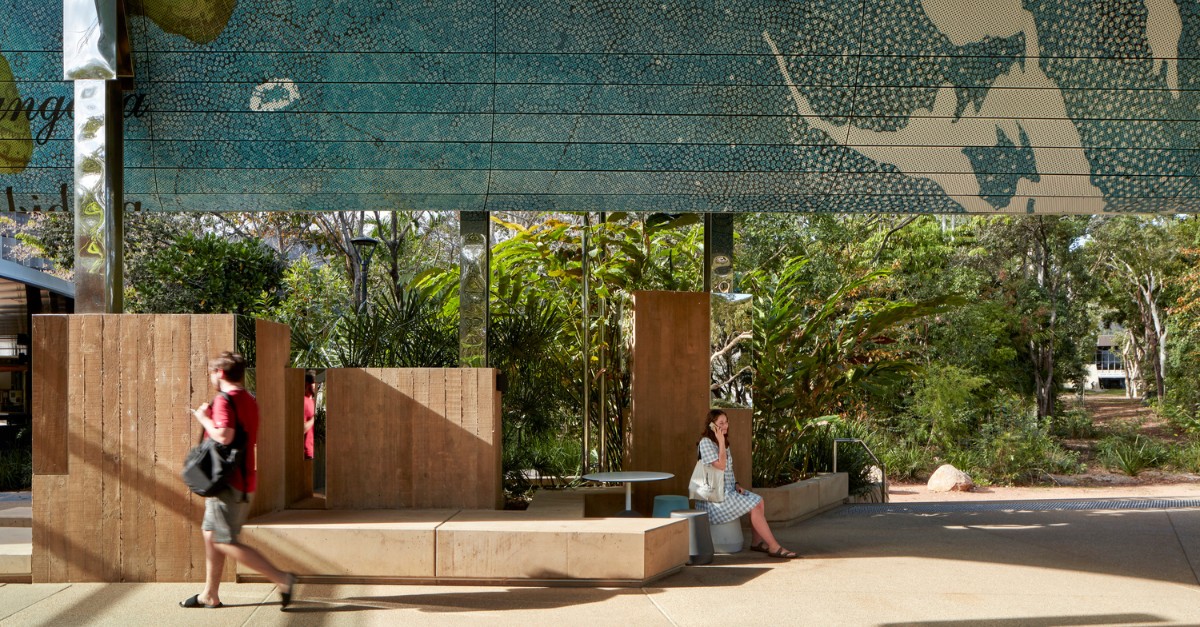
Location: Bebegu Yumba Campus, Townsville QLD
Client: James Cook University
Typology: Building
Site Area: 2,600m2
Architecture: COX Architecture and Counterpoint Architecture (Richard Coulson, Ali Farmer, Bastiaan Kolff)
Builder: Woollam Constructions
Landscape: RPS
Engineer: Meinhardt
Artwork: Megan Cope
Art Curation & Installation: UAP
James Cook University (JCU) Central Plaza delivers shade, shelter and identity for the Bebegu Yumba Campus. Positioned at a crossroads in the University’s desire lines across the campus, the plaza bridges the Magnetic Island Axis, the central organising principle of the Masterplan, and aligns key pathways to future building opportunities.
It is perfectly placed to connect Wadda Mooli Creek and the wider University, forming a central meeting place and marker to help orientate visitors moving through the campus. The multi-functional space serves as a gathering place for formal and informal occasions and provides respite from the heat and unpredictable Townsville weather.
The client, JCU, showed ambition for something memorable – an identifying feature to attract more students and provide an enhanced campus experience. The fluid, elegant shape of the canopy and the impressive 405m2 artwork adorning its ceiling combine to create an awe-inspiring feature for JCU’s Bebegu Yumba Campus.
This work transforms James Cook University Central Plaza into a wave of knowledge systems. It is a reference point for multi-disciplinary research fields connected to local environments and simultaneously provides a source of inspiration for students committed to learning about Gurrumbilbarra and Thul Garrie Waja Country.
